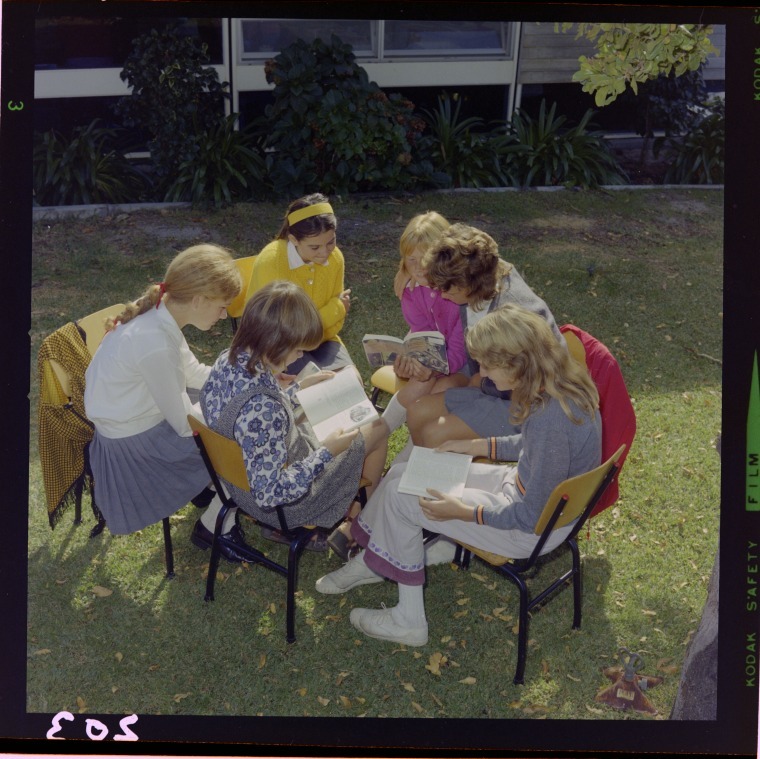Classroom Activities
These suggested activities and resources are to further support the teaching of migration stories in the classroom. The WA Migration Stories online resource is a useful starting point for introducing Western Australian migrant groups and encouraging further inquiry.
- Compile a list of the countries of origin for members of your class and create a visual depiction of the data (e.g. pie chart, bar graph). Discuss emerging trends, for example: which country do the highest proportion of class members originate? Encourage students to share reasons when and why their family may have migrated to Australia.
- Students to consider how they would feel if they were required to move to a foreign country where they had to learn a new language. How would they adapt? Encourage students to share responses through a series of fictional journal entries.
- If you could live anywhere, where would it be? Each student compiles a list of needs and wants for their ‘ideal home’ and, in small groups, students share their choice and reasons why. What were the similarities and differences between students’ needs and wants?
- Students research a Western Australian migrant group from the WA Migration Stories online resource. Taking on the persona of a migrant from that group, students write a series of journal entries. These should detail what the migrant is doing at the time and how they are feeling in response to those experiences. Encourage students to choose a specific time frame. Ask students to research evidence of their migration story.
- Create a digital presentation about a migrant group in Western Australia from the WA Migration Stories online resource or another of their own choice. Outline the reasons for migration and the contributions that migrant group made to Western Australia. Use the State Library catalogue to access photographs, audio and video for incorporation into the presentation.
- Compare and contrast two stories of migration (see list of recommended books). What similarities exist between the experiences of the main characters? What difficulties or challenges did they face?
- Set a homework activity whereby students pack the items into their school bag that they would take if they suddenly had to flee their home. Students then lay the items out, photograph them and/or compile a list. Display the photographs and lists in the classroom. Students compare and contrast the items their peers chose to take.
- List the different ethnic groups that migrated to Western Australia throughout the 20th century. Discuss the impact they have made on the broader community. Find examples of this online.
- In 1901, the Immigration Restriction Act was passed to limit immigration to Australia. This marked the beginning of the White Australia Policy. In groups, form an argument for or against this policy. Using role play, debate the pros and cons of prohibiting the immigration of particular ethnicities to Australia.
- Create a suitcase story in a shoe box. Choose a family member or a famous Australian from a migrant group to find primary source material that tells their migration story. Make copies of the primary sources and write an explanation of that source to tell the story. Acknowledge your sources in a bibliography.
Disclaimer:
This resource has been compiled with the understanding that some migration experiences may have been traumatic for some people. The State Library has endeavoured to convey these experiences in a sensitive child-friendly manner for the target audience.
In compiling these activities for the classroom, the State Library is mindful that the demographic of an individual class varies from school to school and that some class groups may contain students that have had recent, traumatising migration experiences. It is recommended that these activities are facilitated at the teacher’s discretion.
Recommended reading
- The following is a list of texts that explore the topic of migration:
- Do, A and Do, S. and Whatley, B. (2011). The Little Refugee. Sydney: Allen & Unwin.
- Estela, L. and Ottley, M. (2015). Suri’s Wall. Melbourne: Penguin Books.
- Fleichman, P. and Ibatoulline, B. (2013). The Matchbox Diary. London: Walker Books.
- Kobald, I. and Blackwood, F. (2015). My Two Blankets. Melbourne: Little Hare Books.
- Tan, S. (2012). The Arrival. Melbourne: Lothain Books.
- Wilkinson, C. and Anelli, L. (2017). Ten Pound Pom. Australia: Walker Books
- Young, R and Ottley, M. (2015). Teacup. Australia: Scholastic

